-
Membership
Membership
Anyone with an interest in the history of the built environment is welcome to join the Society of Architectural Historians -
Conferences
Conferences
SAH Annual International Conferences bring members together for scholarly exchange and networking -
Publications
Publications
Through print and digital publications, SAH documents the history of the built environment and disseminates scholarshipLatest Issue:

-
Programs
Programs
SAH promotes meaningful engagement with the history of the built environment through its programsMember Programs
-
Jobs & Opportunities
Jobs & Opportunities
SAH provides resources, fellowships, and grants to help further your career and professional life -
Support
Support
We invite you to support the educational mission of SAH by making a gift, becoming a member, or volunteering -
About
About
SAH promotes the study, interpretation, and conservation of the built environment worldwide for the benefit of all
Turkish Leftovers
Aymar Mariño-Maza is the 2018 recipient of the H. Allen Brooks Travelling Fellowship. All photographs are by the author, except where otherwise specified.
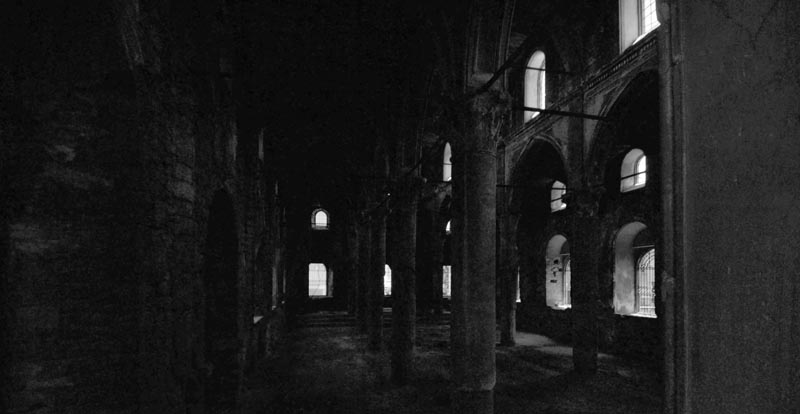
Figure 1: Interior of abandoned Aya Panagia Greek Orthodox Church, Isparta
In my humble opinion, leaving food on your plate is a display of weakness of will. To leave food on your plate in Turkey, though, is just sacrilegious. Turkish food is just too good to leave behind. As proof of that, in Istanbul I once ate an entire Armenian pizza by myself in under five minutes. For anyone who has never heard of the dish, do not be alarmed. It is ridiculously thin and so delicious that nobody in their right mind would want to share it. Known as lamadjo in Armenian and as lahmacun in Turkish, this traditional Turkish dish—yes, I said Turkish—is one of the few traces of the Armenian minority that once lived in the country less than a century ago. And, much like the facts surrounding the disappearance of that minority from Turkey, the origins of that dish are the subject of a heated debate between Turks and Armenians.
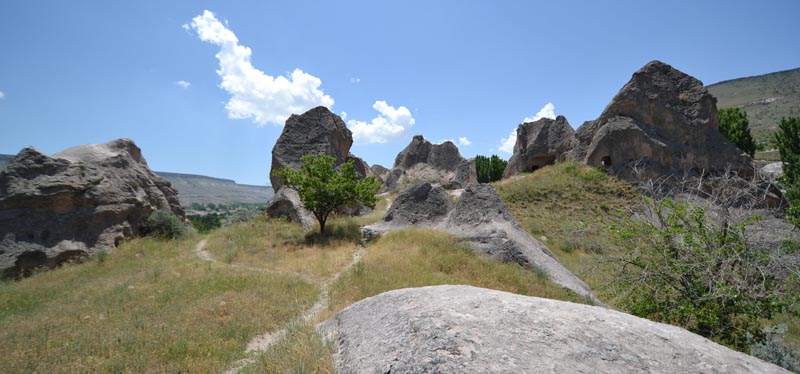
Figure 2: Monk cells hidden within the rock formations at Keşlik Monastery, Cappadocia
For better or worse, it’s usually easy to spot the immigrant in the crowd. After a few years, or a few generations, the immigrant might become part of the crowd, their influence added into the mixture that comprises a region’s cultural makeup. And yet, for whatever reason, if you look closely, you can still spot them. But it’s not always as easy to spot the emigrant. The reason is simple enough: he (or she) is no longer there. The only way to spot him is to somehow find the vacuum that emigrant left behind. The problem is that this vacuum is quickly filled up, appropriated, or erased. The emigrant’s activities, way of life, economic impact—in short, his legacy—that’s hard to find when the people who once acted these activities out can no longer be seen in the landscape. One of the few things that does get left behind is architecture—and, as we’ll see, even that has a way of disappearing.
The following is a study of the architectural legacy of the Christian groups displaced from Turkey around the turn of the 20th century. Though the spaces being looked at are mostly Greek, those displaced also include Armenians and Assyrians, and some of the architectural spaces these three groups left behind can still be seen throughout Turkey. The different approaches to preservation that will be seen reveal the complex and variegated outlook of the Turkish people and government toward the minority groups whose legacy is (or was) held within these spaces.
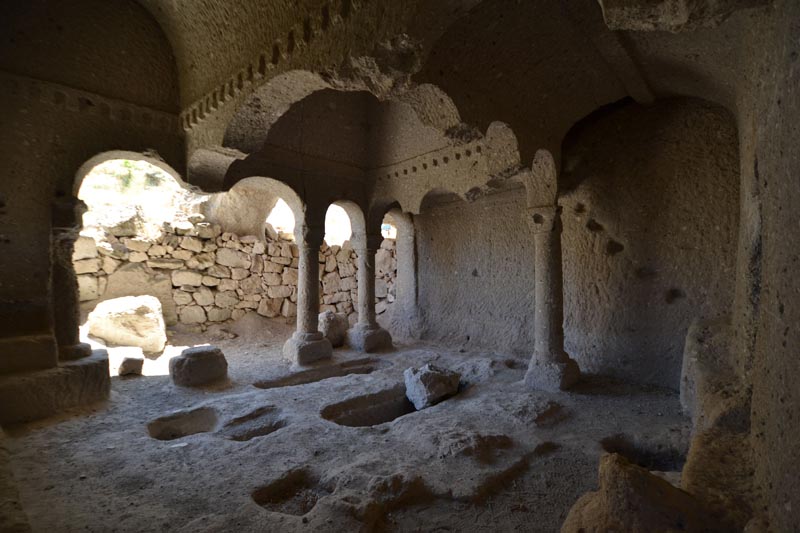
Figure 3: Interior of Kubbeli Kilisi (The Domed Church) in Soğanlı Valley, Cappadocia
Scorched Earth
As the author Thea Halo aptly wrote of her Assyrian heritage, “How could I be something that doesn’t exist?”1 Assyrians do not exist anymore, she was repeatedly told by people who were unaware of the Assyrian minority displaced from Turkey in the series of expulsions that were carried out in what is now Turkey around the turn of the 20th century.
One of the reasons most people aren’t aware of the existence of these people is because of the work that the Turkish government did to cover up these expulsions, which were, according to academics such as Taner Akçam, Benny Morris, and Dror Ze’evi, part of a larger scheme to remove the Christian population from both the ethnic and cultural makeup of Turkey. As leading academic on the Armenian Genocide Taner Akçam (dubbed by the New York Times as the “Sherlock Holmes of the Armenian Genocide”) relates, “I was not aware even that Armenians were living in Turkey… It shows clearly the impact of the Turkish education system; the existence of Armenians—Christians in general—was erased from the memory map.”2 This kind of cultural erasure is a common throughout history. After all, as Winston Churchill once said, “history is written by the victors.”
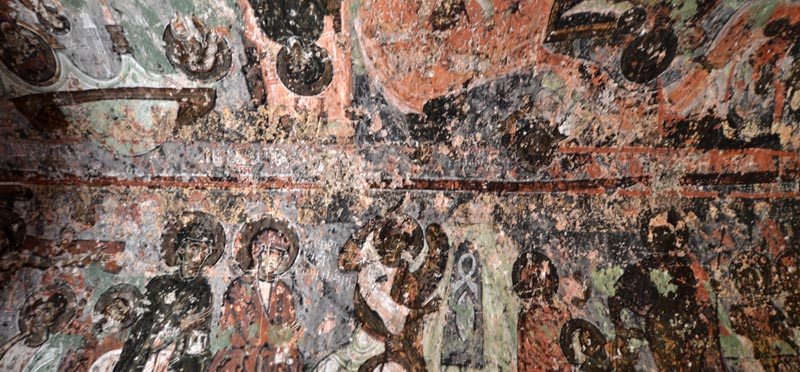
Figure 4: Medieval frescoes in Snake Church in Soğanlı Valley, Cappadocia
Traveling around Turkey almost a century after the final series of expulsions, it is easy to forget that Christians once used to make up a large minority of the country’s population. For example, one source states that Armenians and Greeks together constituted eleven percent of the population in 1976 (take this with a grain of salt, however, as demographic numbers in Turkey during this time period are highly contested and can’t be proven due to the lack of complete documentation).3 At first glance, there seems to be no sign that such groups ever existed, and the lively and welcoming nature of Turkish people clashes with the images of violence that were reported in foreign documentation at the time of the expulsions and population transfers. Whether or not the deportation of these groups was systematic or violent, the truth is that where once there was religious diversity, now there is a nearly homogeneous religious makeup.
The Ottoman Empire, which spanned three continents and was inhabited by a diversity of religious, ethnic, and cultural people, is still considered by many as a historical example of diversity. Many scholars note the relatively harmonious relationship, both economic and social, between the Muslim majority and other religious minorities. This stands in stark contrast to other accounts, which describe the subjugation of minorities at the hands of the Ottomans. However, the latter might be put in perspective through what Edward Said calls the “Ottoman peril,” the lasting image of the East as a danger to the West, fomented by the Islamist Ottoman takeover of Christian Europe.4 There is probably some truth to both accounts, since the coexistence of such diverse groups has a tendency to incite friction among them. These frictions (both from within and without) culminated in the slow breakup of the empire, beginning with the Battle of Vienna in 1683 and ending soon after the Second World War, with the 1922 dismantling of the last sultan’s title. With the disintegration of the empire’s geographic makeup, however, came the dissolution of that diversity.
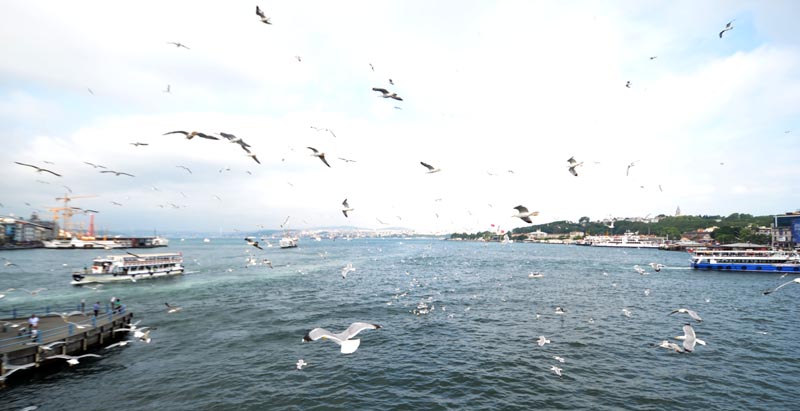
Figure 5: View of the Bosporus from Galata Bridge, Istanbul
Architectural traces of that historical diversity are still visible throughout Turkey, notably in Istanbul, where, in the words of the writer Orhan Pamuk, they exist as “remains of a glorious past civilization,” so that “[the] people of Istanbul simply carry on with their lives amid the ruins.”5 Pamuk goes on to describe the hüzün that arises from living amid the ruins, a term that speaks to the communal melancholy felt by the inhabitants of this changed landscape.
“History becomes a word with no meaning; they [Istanbul residents] take stones from the city walls and add them to modern materials to make new buildings, or they go about restoring old buildings with concrete. But it catches up with them: By neglecting the past and severing their connection with it, the hüzün they feel in their mean and hollow efforts is all the greater. Hüzün rises out of the pain they feel for everything that has been lost, but it is also what compels them to invent new defeats and new ways to express their impoverishment.”6
Pamuk was writing about Istanbul specifically, but the reality he describes could easily be seen across the entire country. Though this hüzün stems from a broader societal change, it is fomented by the physical spaces that mirror the all-too-visible transformation back to the people. This is one of the most powerful qualities of the built landscape: its ability to make history physical. Ruins reveal bits of the multifaceted lives of people that have come before us.

Figure 6: Panorama of Smyrna (Izmir) bay from the Kadifekale
And yet, architecture doesn’t always endure very long—sometimes not even long enough to be studied in this way. In Turkey, many of the Christian structures, from churches to entire villages, were torn down or suffered fires during or after clashes between the Christians and the Turkish and/or Kurdish forces. The coastal city of Smyrna, now called Izmir, is a good example of this. Originally inhabited by a large concentration of Christian people, most of the city was burnt during the expulsions that were carried out in 1922. The only neighborhoods to survive the fires were Turkish. This form of spatial erasure is a powerful way of removing the existence of a people from the historical landscape of a region. This is a facet of the displaced experience that is seldom prioritized: people are not simply removed from their space; their spatial legacy is many times also removed from history.
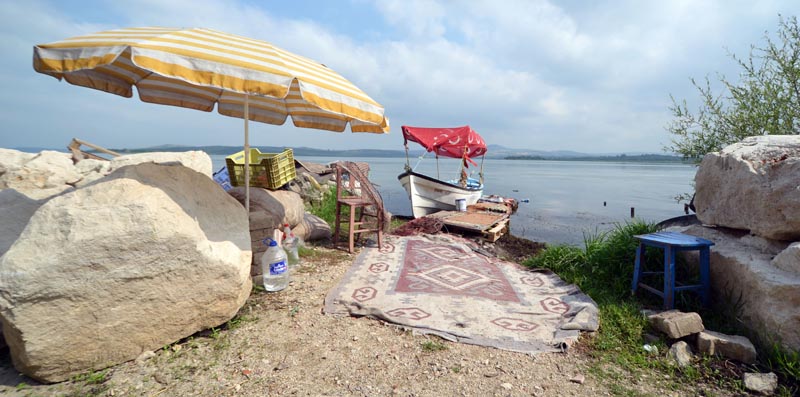
Figure 7: Fisherman's dock in Gölyazı, a village repopulated by Muslim refugees after the 1922 expulsion of its Christian residents
Spoils of War
An alternative to destruction is appropriation. Many of the churches across Turkey were converted to mosques soon after the expulsions. Minarets were constructed to mark the entrances to basilicas and Christian iconography was removed, producing a hybrid religious image that mirrors the religious layering of such iconic Turkish spaces as Istanbul’s Hagia Sofia. In the words of Zeynep Kezer,
“Such acts of repurposing were not done simply out of necessity—since in towns with large numbers of ‘abandoned properties’ less significant structures would have been available. Rather, they were deliberate demotions in status that replaced a sacred use with a mundane and, at times, sacrilegious one. In so doing, they were meant to marginalize these landmarks both physically and symbolically, as if to purge the non-Muslim communities that had built and kept them alive out of local geographies and histories.”7
But Kezer’s point does not apply universally. Some villages were entirely repopulated with homeless Muslim refugees coming from Greece and the Balkans, who then occupied the abandoned Greek and Armenian houses. The problem lies in the fact that most of the displaced still owned these houses—even though there was no chance of them ever returning to claim them. Property rights are among the many rights that the refugee is forced to relinquish—rights that protect the very humanity of a person within contemporary society.

Figure 8: Abandoned buildings in Tokat
Some historians assert that the government’s intention was for the displaced never to return, though many attempted to do so and a few times the government even sponsored temporary returns for some—only to renew expulsions some years later.8 As Daisy Sindelar writes, “The 1915 massacre of Armenians by Ottoman Turks was more than a systematic ethnic purge. It also was a desperate effort to save a once-great empire.”9 The expulsions of Armenians and the other Christian groups, which more often than not took the form of death marches, battles, and massacres, was partially in response to the rebellions that were taking place in the outer edges of the empire, which could be seen as signs of a nation crumbling. Christians were considered a national threat because of their economic power and their large numbers, and also because, on some level, they represented proto-nationalist elements that were emerging within the weakening nation.
The expulsions occurred across a period of more than thirty years, under the auspices of three different governments, were executed by a variety of tribal groups and local government officials, and were directed at various individual groups separately.10 And yet, seen as an overall demographic trend, they culminate in the homogenization of a country and—if you’ll allow my appropriation of the term—the removal of an alternative form of “Ottoman fear,” the internal fear of a multi-faceted populace that is too complex to keep in check.
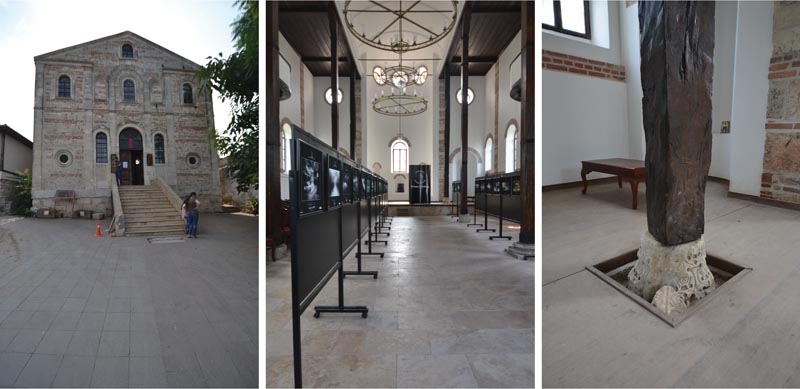
Figure 9: Views of Saint Panteleimon Orthodox Church: exterior (left), interior (middle), and column (right)
Other times, the abandoned structures were left to disuse. Many of them dot the Turkish landscape from Europe to Asia. Many of these abandoned buildings are eyesores to inhabitants and visitors—or as emblematic ruins of what Pamuk wrote about: a reminder of what once was. In places such as Tokat, a small town set within a picturesque valley in the Pontus, these structures are hard to ignore. After a series of deportations and clashes in the early 20th century, Tokat’s population dropped by nearly half. The buildings left behind serve as constant reminders of the town’s once sizeable Christian population (mainly Armenian) and the economic power it held in the region until World War I.
Sometimes, however, the spaces are refurbished. An unlikely example of this is Saint Panteleimon Orthodox Church, set in the small village of Gölyazı, just south of Bursa. The small fishing village was originally populated by Greek fishermen. After they were expulsed from the country, the village was repopulated by a small group of Muslim refugees that came to Turkey as part of the population exchanges carried out at the time. The town recently restored the Orthodox church, originally built in 1903, and now it is kept open to the public for use mainly as a cultural center.
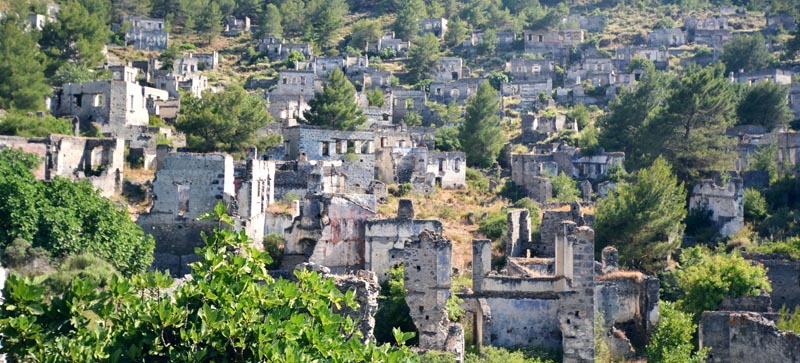
Figure 10: Kayaköy abandoned village
No Man’s Land
Many readers will be well acquainted with the many ancient ruins that can be found across the Aegean coast of southern Turkey. Visitors from across the world come to Turkey to visit such places as the mythical city of Troy or the Roman ruins at Ephesus, just to name a couple. But there are another collection of ruins that are beginning to gain popularity as a tourist destination—even if it is just among the more adventurous visitors.
Kayaköy (Levissi in Greek) is one of the few remaining Greek villages in Turkey and the only place in Turkey actively advertised to tourists as a site of the forced displacement of its inhabitants. Incoming Muslim refugees decided against repopulating the originally Greek hillside village, instead choosing to make a second village at the base of the hill. Purged of its original inhabitants in 1922–1923, the old Greek village now serves as little more than a backdrop of crumbling stone houses and, more recently, as a tourist attraction.
Tourists amble across the vegetation that has grown across streets and into buildings, blurring the edges of these structures until it is nearly impossible to distinguish between interior and exterior. Barely a single roof remains, and the buildings open up to the sky; the scarce architectural details and bits of painted walls that remain are left to the mercy of nature.
Turning these spaces into tourist attractions is at least one way of preserving their historical value. Other examples of this include the Ani ruins near the Armenian border or the cave monasteries in Cappadocia. The ruins in Kayaköy are distinct from these other ruins, however, in that they represent an architectural marker specifically of the displaced Greeks.

Figure 11: Abandoned buildings, Kayaköy
A Tale of Two Churches
Cappadocia is one of the most iconic regions in all of Turkey. The rock-cut architecture built into the strange and beautiful chimney-like volcanic formations are in and of themselves architectural marvels. Rich in a long history of refuge, the area is scattered with underground cities and churches hidden within a landscape that makes one think that magic may truly exist. The architect in me wants to write about these spaces, to marvel at the ingenious ways the inhabitants of that region managed to blend architecture and nature to survive attack or the way others managed the near-impossible feat of building within a beautiful natural formation without destroying it. But, alas, the writer in me knows there is a narrative thread that must be followed. So, with this in mind, we drive a few kilometers away from the main tourist sites of Cappadocia and land in the lesser known city of Güzelyurt.
Güzelyurt was populated by Cappadocian Greeks until the 1924 population exchanges, at which point they were replaced by Turks from northern Greece (Thessaloniki and Kavala). All across Cappadocia, the Christian influence is still preserved, if only as a series of open-air museums. At the base of this town, specifically, we can see a couple ways that heritage is preserved. Two churches in the Monastery Valley here serve as easily identifiable counter examples of how Turkey dealt with Christian “leftovers” after the population exchange.
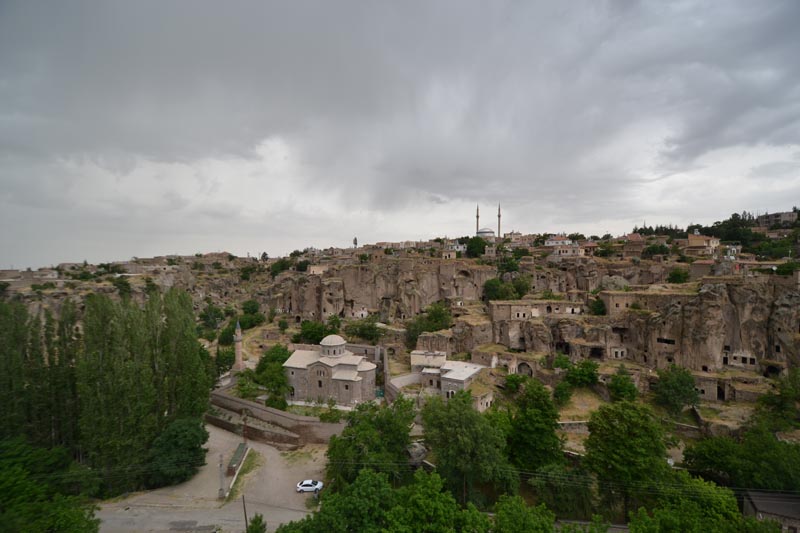
Figure 12: View of Büyük Kilise Camii and the surrounding ruins of the Monastery Valley taken from the cliffs above Sivişli Kilisesi, Cappadocia
Church of St. Gregory of Nazianzus, built in 385 CE, was turned into a mosque after the population exchange in 1924 and is now called Büyük Kilise Camii. Well maintained and actively used by the inhabitants of the village above, it is one of those basilicas with minarets that can be seen across Turkey. Opposite the Church of St. Gregory and elevated above the street level by steep stairs that rise into the mountain behind it is Sivişli Kilisesi (the Church of Pagania), which has been maintained as a church. It retains all its Christian iconography, with a cross over the door and its original stained glass windows and frescoes.
These two spaces depict such different approaches to preservation that it is shocking to see them so close together, let alone within the same complex. But it paints a telling picture: a picture that should serve to caution anyone attempting to use broad strokes to explain the way Turkey has dealt with the architectural “leftovers” of its displaced minorities.
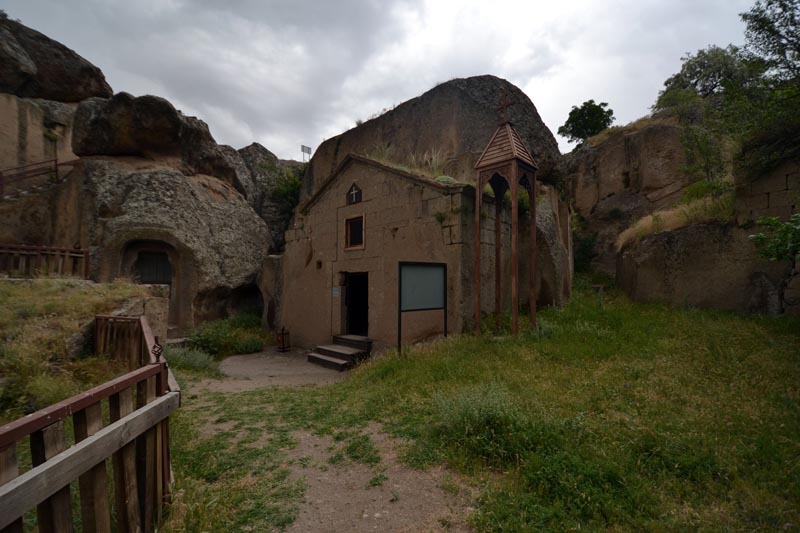
Figure 13: Sivişli Kilisesi (the Church of Pagania)
Interestingly, spaces such as the churches that fill the Monastery Valley aren’t usually attributed to the Christians who were displaced at the turn of the 20th century, but rather to the legacy of the region or to Christianity in general. And yet, these are architectural markers of the cultural heritage of those Christians displaced from present-day Turkey, whether or not they are around to preserve it themselves.
We’ve discussed how displaced people are forced to shed their agency in previous texts, but let us do it once more. This is just another power displaced people must relinquish: power over their past architectural legacy. Displaced people cannot be narrowly defined as people who inhabit refugee shelters, living a temporary truth without past or future. Displacement is not atemporal. Displacement is not only produced; it also produces. Here, we’ve seen one of the most important things that displacement can produce: history. After all, even a rolling stone must leave its mark on the earth it crosses. These spaces we’ve just studied are but pointed examples of this pervasive story, repeated across the whole of Turkey—and, more importantly, across the world. All the displaced leave leftovers; it’s just a matter of knowing how to look at a void.
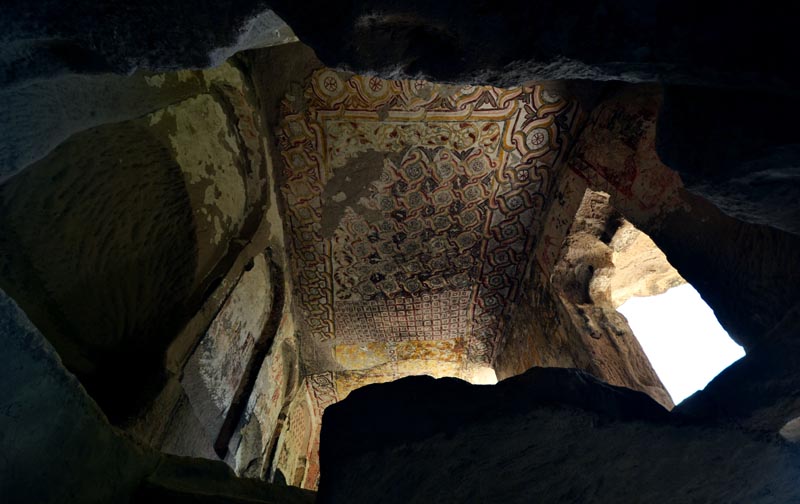
Figure 14: Frescoes at Keşlik Monastery, Cappadocia
2 Robins, J. (2018, August 30). “Taner Akçam: Defiant in the face of Armenian genocide denial.” Noted. Retrieved from https://www.noted.co.nz/currently/profiles/taner-akcam-defiant-in-face-armenian-genocide-denial/
3 Morris, B., Ze’evi, D. (2019). The Thirty-Year Genocide: Turkey’s Destruction of its Christian Minorities, 1894-1924. Cambridge, MA: Harvard University.
4 Said, E. (1979). Orientalism. New York, NY: Random House.
5 Pamuk, O. Istanbul (Vintage International). Knopf Doubleday Publishing Group. Kindle Edition.
7 Kezer, Z. (2015). Building Modern Turkey (Culture Politics & the Built Environment). Pittsburg, PA: University of Pittsburgh Press.
8 Morris, B., Ze’evi, D. Ibid.
9 Sindelar, D. (2015, April 23). “1915: The Crumbling Of An Empire, And The Massacre That Ensued.” Radio Free Europe/Radio Liberty. Retrieved from https://www.rferl.org/a/crumbling-ottoman-empire-and-armenian-massacres/26974721.html.


Leave a commentOrder by
Newest on top Oldest on top